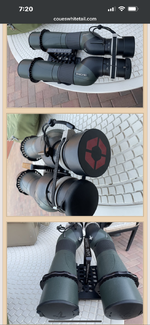Jake Larsen
WKR
So it’s basically a top of the line range finder with mediocre glass
Seems like the only one with good glass and a good range finder is Vector X. I just don’t think that’s an option. Just way too many CS and QC horror stories for such an expensive product.
I took a second look at the NL Range but the premium for such a poorly integrated ranging unit also seems meh.
I’m sorry I just realized I misread your original question. I was referring to the Sig Zulu image stabilizing binos. Those definitely have a place in the elite glass discussion, not because of the clarity or light transmission, but because they can basically give you “off a tripod” type stability while hand holding.
However my original comment still stands in reference to the Kilo lineup. Different world of clarity/light transmission compared to Swaro
Sent from my iPhone using Tapatalk


